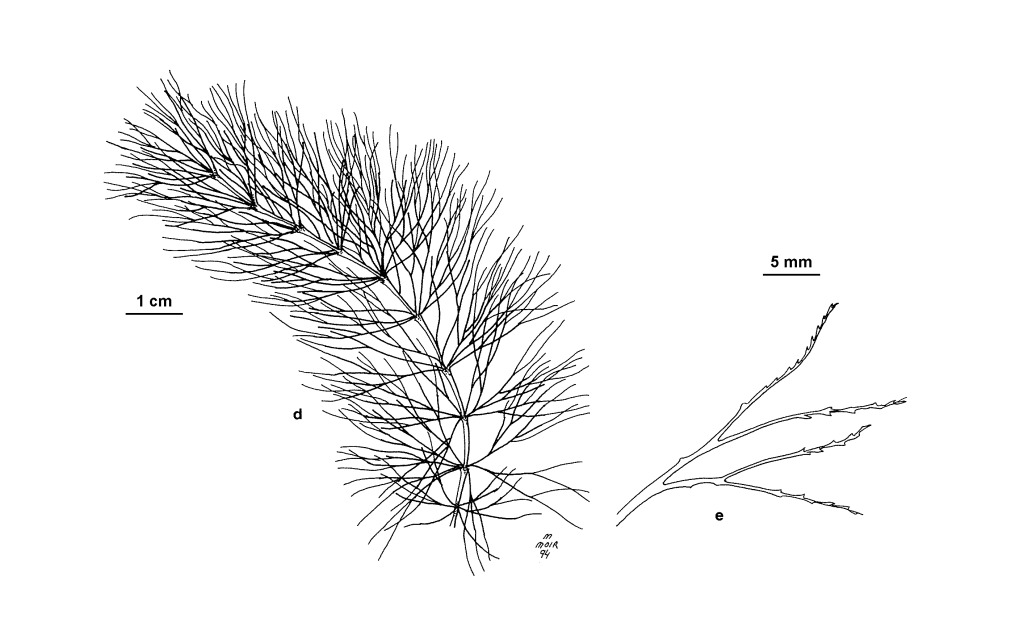Ceratophyllum demersum
L. HornwortPlants unattached or rarely loosely attached to sediment, rough to touch, stiff and brittle. Stems usually 30–60 cm long and less than 1 mm diam. Leaves c. 7–12 per whorl, 1–4 cm long, dichotomously forked 1–4 times; ultimate segments narrow, more or less cylindric, tapered, with small teeth, apices usually truncate and toothed at each side. Flowers small, greenish and inconspicuous, involucral lobes 1.5–2 mm long, variously toothed at apex, often with long apical projection. Fruit c. 4.5 mm long (excluding spine), black, with 3 soft spines longer than fruit, 1 terminal (a persistent style) and 2 laterally almost basal and spreading (one or both basal spines may develop only partially). Flowers Jan.–Feb.
MuM, VVP, VRiv, MSB, RobP, MuF, GipP, NIS, Strz. Also WA, NT, Qld, SA, NSW. Europe, Asia, Africa, Malaysian region, New Guinea, North America, introduced into New Zealand. Scattered through Victoria, often forming dense growths in usually fresh, still to slow-flowing waters, a few metres deep or less.
Extensive growths can choke drainage channels and hydroelectricity systems.
Pollination is achieved by stamens becoming detached from the plant and rising to the surface. The pollen is then released and sinks, some landing on the female flowers.
Myriophyllum (Haloragaceae) is superficially similar to Ceratophyllum, but the leaves of that genus are divided pinnately rather than dichotomously. Cabomba caroliniana (Cabombaceae) has dichotomously divided leaves but the ultimate leaf-segments are smooth rather than toothed and the leaves 3 or more times divided at base.
Entwisle, T.J. (1996). Ceratophyllaceae. In: Walsh, N.G.; Entwisle, T.J., Flora of Victoria Vol. 3, Dicotyledons Winteraceae to Myrtaceae, pp. 33–35. Inkata Press, Melbourne.
 Spinning
Spinning




